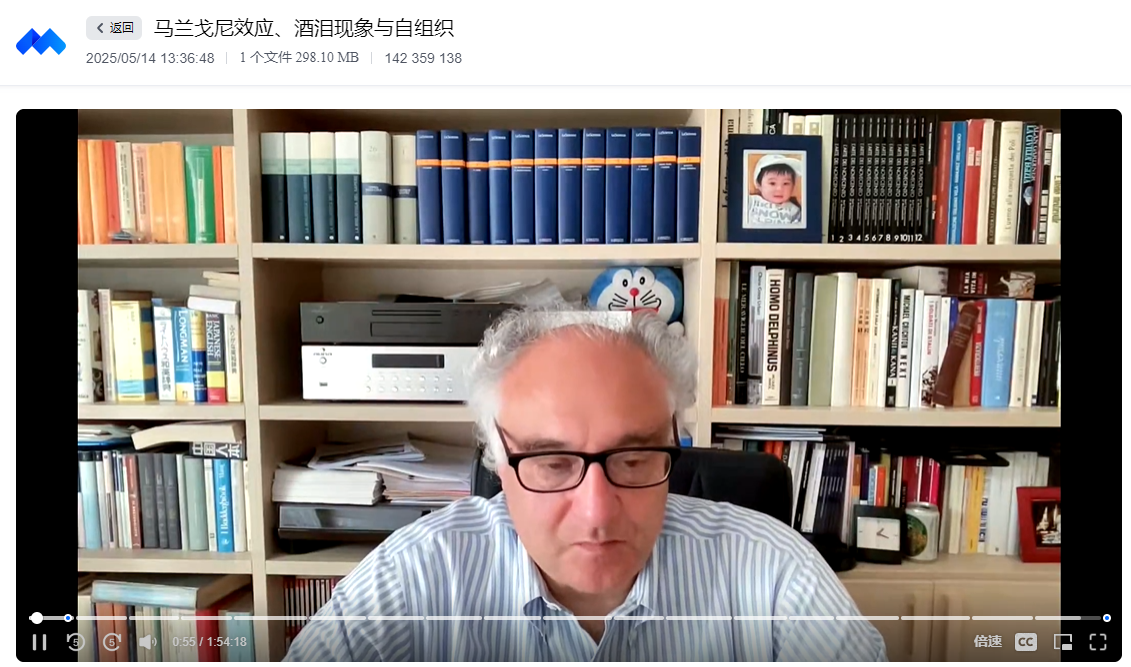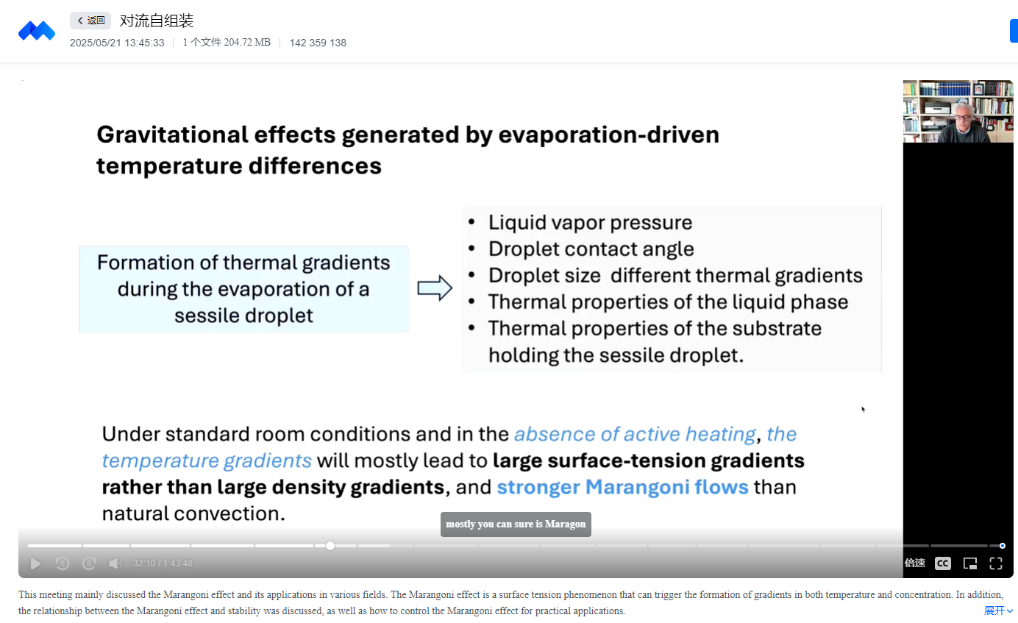In May and June 2025, Professor Plinio Innocenzi from the University of Sassari, Italy, was invited by Professor Xiaoming Sun’s NanoChem research group at Beijing University of Chemical Technology to deliver an online lecture series on droplet evaporation and self-assembly. The event attracted wide participation from students and researchers alike.

Beginning with the fundamental principles of droplet evaporation, Professor Innocenzi thoroughly explained key concepts such as surface tension, contact angle, and capillary effects, with a particular focus on the origin and mechanism of the Marangoni effect. As a flow phenomenon driven by surface tension gradients, the Marangoni effect plays a crucial role in determining the distribution and alignment of nanoparticles during evaporation. Through vivid experimental demonstrations, the lectures showcased how factors like droplet size, curvature, and environmental conditions regulate evaporation rates and ultimately influence the formation of self-assembled structures.
The lectures also explored the origin and applications of the coffee-ring effect, a phenomenon driven by capillary flow and particle interactions that plays a significant role in colloidal self-assembly. Professor Innocenzi highlighted how tuning solvent properties, ambient humidity, and deposition speed enables precise control over droplet condensation processes, thereby allowing the fabrication of nanostructured materials with tailored functionalities. These materials, he noted, hold significant promise in fields such as photonic sensing and biomedicine.
Another topic addressed was the behavior of droplets at liquid interfaces, including phenomena such as the "breadcrumb effect" and their novel applications in nanotechnology. Professor Innocenzi emphasized that a deep understanding of these fundamental physicochemical processes is essential for the development of next-generation nanomaterials, and he encouraged researchers to further investigate the multiscale regulation of evaporation and self-assembly.

This lecture series not only deepened participants’ understanding of the connections between droplet behavior and nanoscale self-assembly but also provided fresh perspectives for future material design. This captivating journey at the intersection of science and art revealed the scientific logic underlying natural phenomena and opened new avenues for innovation in advanced materials.
Biography:
Plinio Innocenzi is full professor of Materials Science at the University of Sassari in Italy and Director of the Laboratory of Materials Science and Nanotechnology. He has bee associated foreign researcher at Kyoto University from 1992 to 1996 and has served as science councellor at the Embassy of Italy in China from 2010 to 2018. He has been one of the founders of the International Sol-gel Society and a Fellow from 2024. He is also a Fellow of the Royal Society of Chemistry and Academician of the European Academy of Sciences. His research interest is focused on nanomaterials through self-assembly and nanochemistry and has developed applications for photonics and nanomedicine. He has published more than 250 articles in international journals and has received many awards for his research activity.
